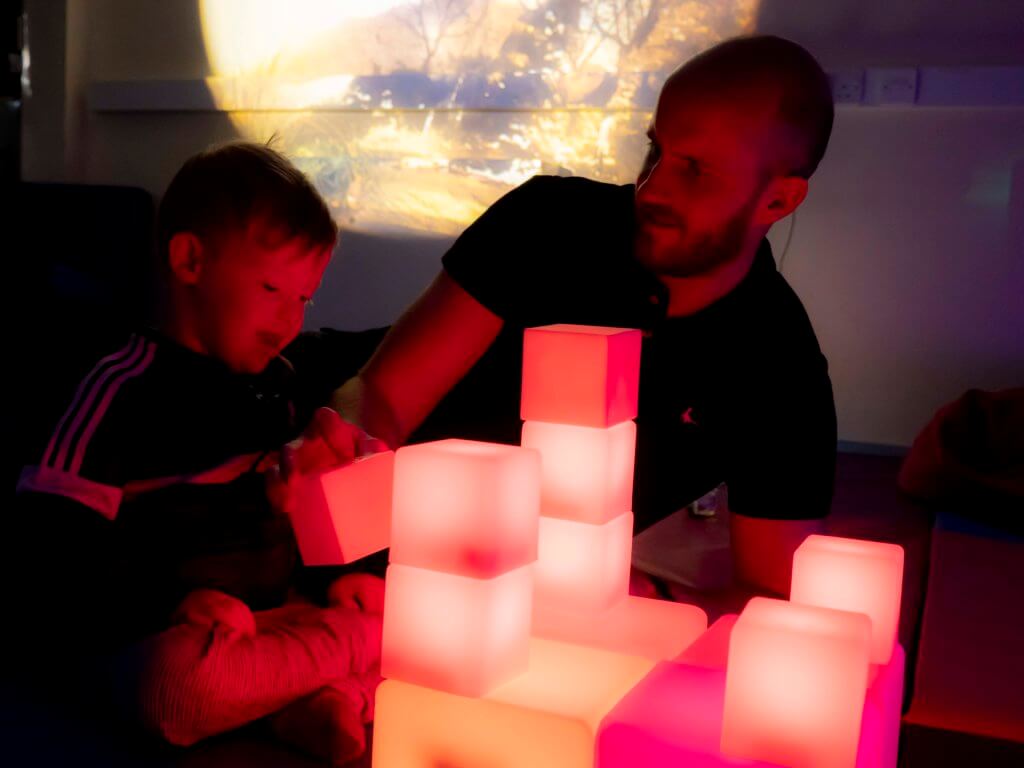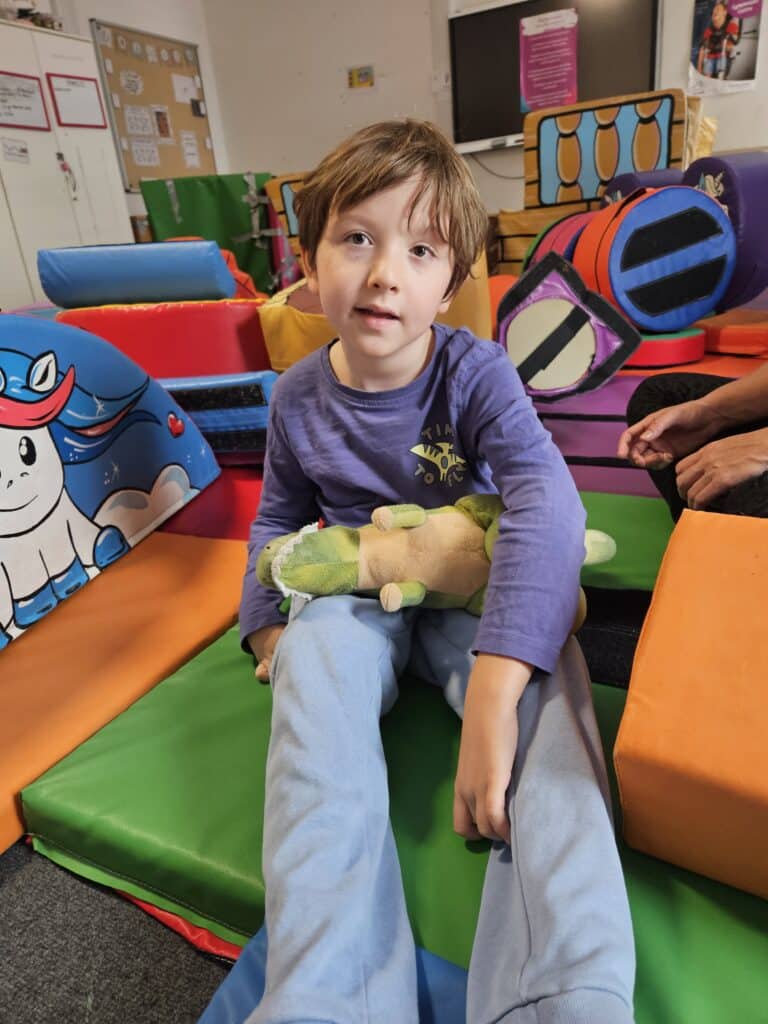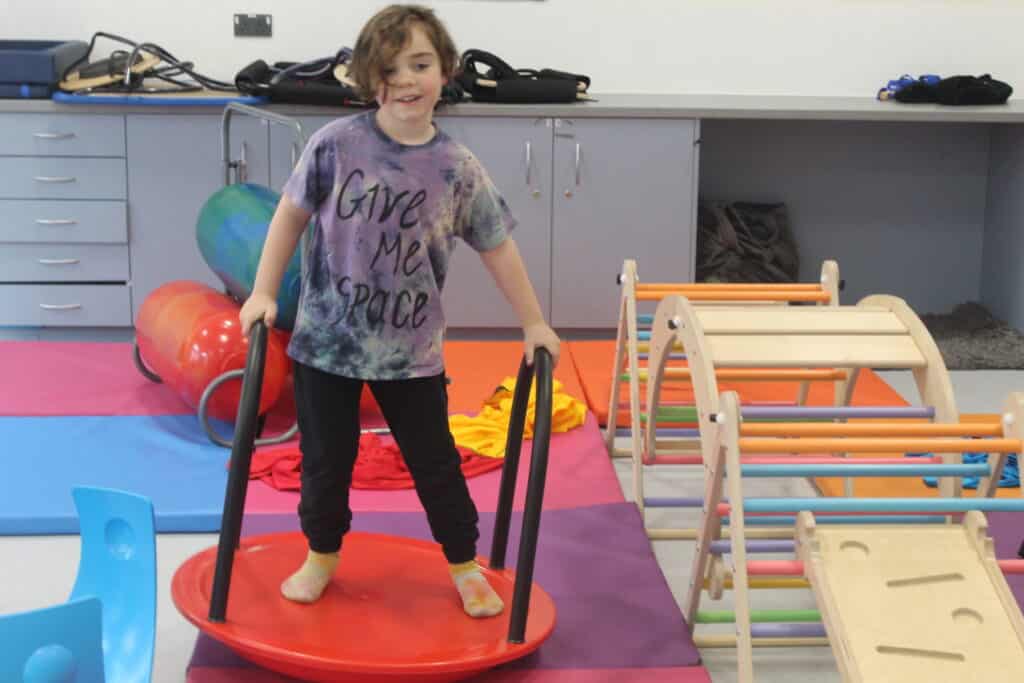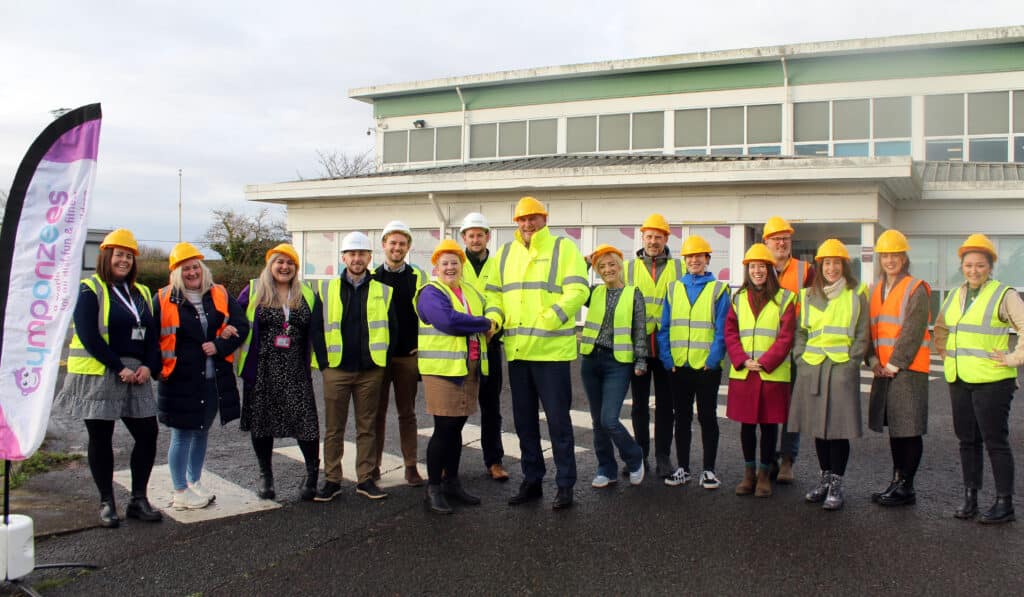Stealthy Therapy – Improving Health and Well-Being Through Community Activity
-Stephanie Wheen, CEO and Founder of Gympanzees
I can’t tell you how frustrating it was that the maximum number of people I could help was ruled by how many hours I had in my week and whether families could afford my services!
I loved my job as a private physio for disabled children. I got to experience the enormous pleasure and work satisfaction that came with children holding their head up, pushing through their arms, crawling, sitting or even taking steps for the very first time under my guidance. It was an incredible privilege, and there was barely a week that went by without some tears of joy. However, when I started my private practice, I was the only physio working full time in Bristol and, when children are improving, they don’t leave, so I ended up working 60-hour weeks – but this still meant I could only help 35 children and I was having to turn down too many families. The flip side was that I knew how many more families were not able to access private therapy due to cost and this sat uncomfortably with me.
It occurred to me that if I could take my children into the community to do exercise then they wouldn’t have to come to me so often and I could see more clients. However, when I tried to take my children to the gym, to soft play, to climbing walls, to the park, to trampoline parks etc it was a failure each time. Either the children couldn’t physically access the equipment, the building was inaccessible or they couldn’t cope with the sensory environment (too noisy or too busy). Each situation had different issues but all had the same problem – they weren’t inclusive for my clients. I was astounded that these children who need exercise more than anyone couldn’t access mainstream play or activity centres let alone specific community exercise, and the children who couldn’t access private therapy were getting even less exercise.
Our Research
I began researching this problem in 2016 and my research found it wasn’t just children with physical disabilities who struggled to access exercise or leisure opportunities – it was children with many different disabilities and our research was matched by the national data which reported that 84% of children with disabilities couldn’t access regular leisure facilities and their health and well-being was suffering (Contact a Family, 2014), 72% of parents suffer mental health difficulties caused, in part, by isolation (Contact a Family, 2011). 92% of parents with a child with complex needs felt their child did not have the same opportunities to play as their non-disabled peers (SENSE, 2015). 81% of these same parents reported difficulties accessing mainstream play groups and local play opportunities (SENSE, 2015).
We all know the benefits of exercise in terms of cardiovascular health, tackling obesity, for our mental health etc. But, for some with the most severe physical difficulties, the most exercise they will do will be when they are rolled over in bed or being hoisted from one piece of equipment to another. Children with autism are also less likely to take part in regular exercise with 80% who are more likely to have coordination difficulties (Stanish et al, 2015) and yet exercise is so important for both these groups. For children with physical disabilities, exercise can be the key to developing a proper fitness status, participating in physical activity with peers and preventing a decreased health when ageing (Balemans, Bolster, 2019) amongst a myriad of other benefits. For those with Autism, ADHD or sensory processing difficulties, exercise intervention can result in improvements to numerous behavioural outcomes including stereotypic behaviours, socio-emotional functioning, cognition and attention (Bremer et al, 2016). The fact that these are the children who have trouble accessing regular leisure and exercise is something that needs to change!
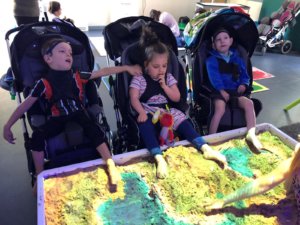
Permanent Leisure Centre
I started Gympanzees with the mission to open the UK’s first fully inclusive leisure and exercise facility that will cater for the play and exercise needs of the 66,000 children and young people with disabilities who live within an hour of Bristol, to improve their health and well being and to take their families out of isolation. The centre will be fully inclusive meaning that it will be open for everyone. However, instead of disability being the add on, disability will be at the core of the plans.
The facility will include exercise studios and therapy rooms as well as 9 different activity rooms including a specialised gym with some equipment that can help children with the most severe physical disabilities do exercise and get out of breath, through to an indoor playground full of swings, hammocks, rockers and equipment that allows children to spin, swing and slide. Every piece of equipment and every activity room is based on therapy principles – either getting children active and exercising (physiotherapy aims) or providing a varied sensory experience (so beneficial for these children) including plenty of vestibular (movement) and proprioceptive (the sensation of knowing where our body is in space and in relation to the rest of our bodies) inputs (occupational therapy aims) but without the therapy price tag.
Pop Ups
As this has never been done before we needed to prove the concept and so set up Gympanzees Pop Ups. These were smaller versions of the main centre including a gym, soft play room, music room, two sensory rooms, trampoline room, indoor playground (sensory integration room), outdoor playground and a sociable café. Sessions were classified according to physical and sensory needs so that children were in a physical and sensory environment that suited them. Children were free to go in any room and use whatever equipment they wanted to. Staff were there to help guide families to appropriate equipment but weren’t providing hands-on therapy, they were just providing the right environment for children to do their own therapy without realising it.
The results were better than I could have hoped. We have had almost 8000 visitors over the 58 days that we have been open with some staying overnight in hotels to be able to come two days in a row and others making a 5 hour round trip for their 1.5-hour session.
I always hoped for health benefits but thought this would come with regular use when the permanent centre opened. However, the feedback was extraordinary, especially in a world of disability where every small change can make a monumental difference to the life and independence of a child or young person, and their family.
Here are some of the highlights:
- A 5-year-old who slept through the night for the first time after her session
- Two 3-year-old boys who had their first-ever laugh
- A 6-year-old who took off her coat and scarf in public for the first time
- An 8-year-old who ate up in public for the first time
- A 16-year-old who refused any form of sport at home and school but rowed a kilometre on the rowing machine
- A 14-year-old who built the confidence at our gym and now goes to a mainstream gym with a personal trainer
- A 10-year-old who has never exercised who asked to replace his dining room table for a static bike as he enjoyed it so much at the Pop Up
- A 9-year-old who held his head up on his own for 10 minutes for the first time
- 57 children and young people who were able to walk in our specialist equipment for the first time
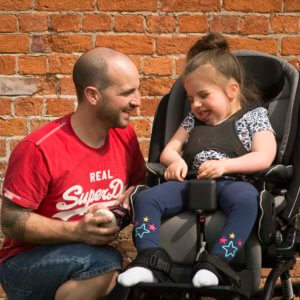
I honestly could go on and on. The tangible ‘firsts’ were matched by the smiles, the look of relief and joy on parents’ faces, disabled and non-disabled siblings being able to play together despite different abilities, the 89% of parents who chatted to another parent they had never met before and the incredibly positive atmosphere that was commented on again and again.
We had proven our concept and were ready to launch our capital campaign to build our main centre when Covid struck. Our Pop Ups and fundraising events were cancelled, our funding dropped off, and for many of our parents, life became more of a challenge.
Project Our Home
We set up project Our Home in response to the pandemic. This included an online resource hub with over 100 pages of disability-specific ideas, videos and links for play and exercise in the home. This was written by myself (physiotherapist), Cath Williams (OT-Founder of Hands Up) and Anne-Marie Baker (OT-Founder of Function First) so that every activity continued in our theme of therapy through fun.
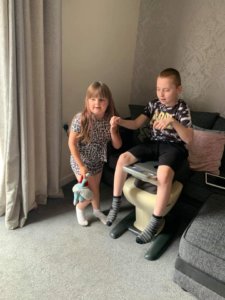
We also ran therapy webinars hosted by a number of fantastic volunteer therapists (with thanks to Cath Williams, Ann-Marie Baker, Natalie Morris (CEO & Founder of the Feeding Trust), Jodie Smitten -(Children’s Wellbeing Practitioner) and Annie Kingston (Founder of Autism Bristol). Do check out our Therapy Webinars which cover a wide range of topics and disabilities.
And lastly, we set up a free equipment lending library where we lent out, to begin with, our Pop Up equipment and have since grown into a library that has 190 larger sensory, gym, therapy and exercise equipment items. Much of this equipment is expensive and many parents have used the library to see whether their child benefits from the equipment before they commit to buying the item themselves. Or they have used the items to stimulate their child or encourage activity at the time when exercise is so hard to achieve.
Once again, we have been humbled by the outcomes of this very simple idea. There have been many health outcomes such as the nine-year-old boy who rolled over for the first time on the vibrating mat and the six-year-old girl who, after using our Ijoy (electric horse simulator), had the first 2 weeks of her life where she didn’t have the painful chronic constipation.
“Life is very samey at the moment. Having something new, and generally quite big and impactful, turn up every couple of weeks helps reduce my boredom but more importantly helps stop my son get into a rut where he repeats the same things over and over. He gets excited about whatever is going to come. He even willingly walks to pick it up if he’s not at school on pick up days. Normally it is very difficult to get him to leave the house, even more so at the moment when there is nothing outside the house that he’s allowed to do that he finds appealing. It gives him much needed exercise and helps with sensory issues, which both impact on behaviour and sleep. Lastly whatever we get is fun, and now more than ever we need that in our lives” (A Lending Library User)
We are now preparing to launch our capital campaign to build the first permanent facility. We are looking for approximately 2 acres of land along the M4/M5 corridor. This facility will allow for almost 200,000 visitors per year. Imagine the health and well-being impacts that could be achieved on this kind of scale. It is a mammoth mountain to climb but I have no doubt it will be worth every step.
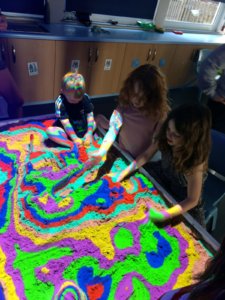
References:
- Balemans, A. and Bolster, E., (2019) Aerobic and Anaerobic Fitness in Children and Youth with Cerebral Palsy. [online]. Accessed from: https://link.springer.com/referenceworkentry/10.1007%2F978-3-319-50592-3_167-1
- Bremer, E., Crozier, M., and Lloyd, M. (2016) A systematic review of the behavioural outcomes following exercise intervention children and youth with autism spectrum disorder. National Library of Medicine. Accessed from: https://www.ncbi.nlm.nih.gov/pubmed/26823546
- Contact a Family. (2014) Counting the Costs [online]. Accessed from: https://contact.org.uk/wp-content/uploads/2021/03/counting_the_costs_2014_uk_report-1.pdf
- Contact (a family). (2011) Forgotten Families, The impact of isolation on families with disabled children across the UK [online]. Accessed from: https://contact.org.uk/wp-content/uploads/2021/03/forgotten_isolation_report.pdf
- SENSE. (2015) The Sense Public Inquiry, The Case for Play; Access to play for children aged 0-5 with multiple needs [online] Accessed from: http://www.childrenspalliativenw.org.uk/wp-content/uploads/2016/06/6a-The-Sense-Play-Inquiry-LIVERPOOL.pdf
- Stanish, H., Curtin, C., Must, A., Phillips, S., Maslin, M., and Bandini, L. (2015) Enjoyment, Barriers, and Beliefs About Physical Activity in Adolescents With and Without Autism Spectrum Disorder. National Library of Medicine [online]. 32(4) pp. 302-317.
- Wheen, S. (2016) Interviews with Parents/Carers and Potential Service Users. Unpublished.
